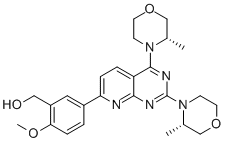This process occurs when the first initiation codon of a bicistronic mRNA is unavailable, as a result ribosomal subunit bypass this site and slips to second nearby AUG site to start initiation. Overall, our data substantiated previous findings, illustrating the role of Vpu in Env synthesis and processing, and in addition supports the notion that Vpu is required for optimal HIV-1 infectivity and pathogenesis. Role of HIV-1 Vpu in intracellular Gag trafficking has been postulated earlier but the site of Vpu function is still not known and how Vpu influences Gag and Env assembly is yet to be established. Several studies have shown Vpu as an important determinant of Gag accumulation in endosomes. The Mechlorethamine hydrochloride steady state localization of Gag is influenced by Vpu; if coexpressed with Vpu, majority of Gag stays at the cell surface, but in the absence of Vpu a significant fraction of Gag is subsequently endocytosed into endosome-like compartment from the cell surface. It was previously reported that Vpu most likely controls targeting of Gag in infected T cells and macrophages because deletion of vpu gene results in accumulation of virions into intracellular compartments. A few contradictory studies have postulated a role of Gag MA in Vpumediated particle release. It was proposed that N-terminal of Gag MA is important for Vpu responsiveness during particle release and is crucial for Vpu function. Another study reported functional interaction of Vpu with Gag through a tetratricopeptide repeat protein, UBP. Furthermore, Vpu has been shown to influence both Gag and Env localization. All these evidences suggest a role of Vpu in HIV-1 Gag and Env trafficking and assembly. Intriguingly, by contrast to what was observed with Gag L30E viruses, in which infectivity of viruses was severely abrogated due to reduced Env incorporation, we observed significant restoration of infectivity of L30E viruses in absence of Vpu. We show here that the inactivation of Vpu by start codon mutation rescued the infectivity defect of Gag mutant viruses by enhancing Env incorporation on released virion particles. In addition we observed significant variation between infectivity of DVpu and L30E-DVpu mutants from 293T, NP2 and GHOST cells. Moreover, in contrast to L30E and DVpu mutant viruses, double-mutant viruses replicated efficiently in primary cells also. Initially, we failed to observe difference in infectivity potential of DVpu and L30EDVpu mutants from HeLa cells. Later, Immunofluorescence data confirmed that in HeLa cells, majority of Env protein of DVpu viruses was localized at the cell Salvianolic-acid-B periphery and some was present in the cytoplasm, whereas in 293T cells diffused distribution of Env throughout the cytoplasm was observed in DVpu constructs which was no different from WT. This indicated cell-type variation in HIV assembly. Next we tested expression level of a host restriction factor, BST2, which is constitutively expressed in HeLa cells and compared with other cell lines. qRT-PCR experiments revealed that BST-2 mRNA expression was 4�C7 folds more abundant in HeLa cells as compared to other cell types tested in this study. Knockdown of endogenous BST-2 revealed that silencing  of BST2 in HeLa cells not only increased the production of DVpu viruses but also enhanced the infectivity of double mutant viruses compared to L30E and DVpu viruses. We anticipate that viruses that come out of cell by overcoming the host restriction factor might have alteration in their overall morphology such as number of glycoprotein spikes as compared to viruses that buds out normally. That’s why we did not observed much difference in the infectivity of DVpu and double mutant viruses from HeLa cells that expresses tetherin/BST-2 constitutively.
of BST2 in HeLa cells not only increased the production of DVpu viruses but also enhanced the infectivity of double mutant viruses compared to L30E and DVpu viruses. We anticipate that viruses that come out of cell by overcoming the host restriction factor might have alteration in their overall morphology such as number of glycoprotein spikes as compared to viruses that buds out normally. That’s why we did not observed much difference in the infectivity of DVpu and double mutant viruses from HeLa cells that expresses tetherin/BST-2 constitutively.